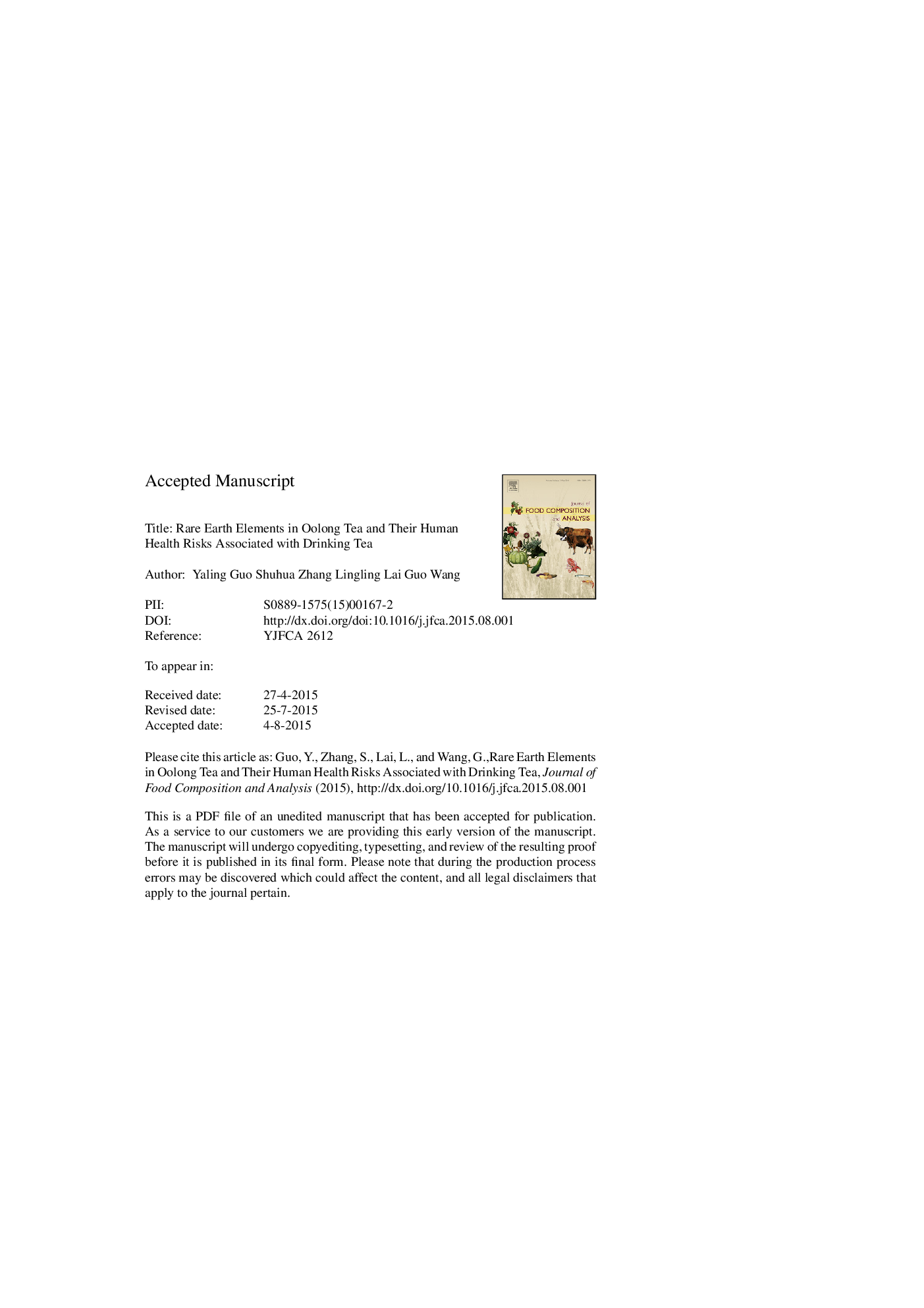| Article ID | Journal | Published Year | Pages | File Type |
|---|---|---|---|---|
| 7620366 | Journal of Food Composition and Analysis | 2015 | 29 Pages |
Abstract
In this study, the content of rare earth oxides (REOs) in made teas and infusions of 57 Oolong tea samples was investigated because when compared to other teas, Oolong tea is believed to contain a higher amount of REOs. The risks of REOs in Oolong tea to human health arising from drinking tea were assessed. The content of rare earth oxides (âREOs) in the various types of Oolong tea varied from 0.62 to 10.1 mg/kg, 71.9-79.6% of which consisted of Ce, La, Y, and Nd. One-time infusion and five times successive infusions resulted in leached rates of 9.86-17.4% and 25.8-32.6% of the total REOs, respectively. The leached REOs increased with TOC in tea infusions. The proposed DAItea (daily allowable intake, 42 μg) would be exceeded when the content of REOs in Oolong tea was greater than 6.84 mg/kg based on the calculation with the highest consumption rate of Oolong tea (15 g/day) and the highest leached rate (41.0%). Among the tea samples studied, only 1.8% of the samples exhibited an REO content of greater than 6.84 mg/kg. Thus, in general, the intake of REOs by drinking Oolong tea is negligible.
Related Topics
Physical Sciences and Engineering
Chemistry
Analytical Chemistry
Authors
Yaling Guo, Shuhua Zhang, Lingling Lai, Guo Wang,
